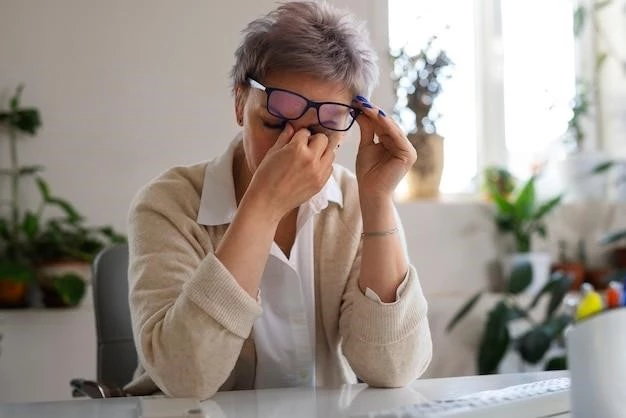Introduction to Vernal Keratoconjunctivitis
Vernal keratoconjunctivitis (VKC) is a chronic, bilateral corneal and conjunctival problem typically seen in young individuals. It is characterized by itching, photophobia, mucous discharge, lacrimation, and pain due to corneal involvement, categorized within ocular diseases.
Vernal keratoconjunctivitis (VKC) is a chronic, severe allergy affecting the eye surfaces, characterized by itching, photophobia, white mucous discharge, lacrimation, and pain due to corneal shield ulcers. It primarily affects young individuals, particularly boys living in warm, dry climates. VKC is an allergic condition involving a complex interplay of humoral and cell-mediated immune mechanisms.
Individuals with VKC often experience recurrent, bilateral, and chronic ocular inflammation, with symptoms exacerbated in the spring and summer months. This condition can lead to corneal damage and permanent visual loss if left untreated. VKC is more prevalent in children and young adults and can impact quality of life significantly, sometimes associated with other allergic diseases such as eczema or asthma.
The diagnosis of VKC is primarily clinical given its distinctive presentation, including limbal gelatinous hypertrophy and upper tarsal giant conjunctival papillae. It is essential to differentiate VKC from other forms of ocular allergies to provide appropriate management and treatment. VKC is a relatively rare ocular disease that requires timely intervention to prevent long-term complications and preserve vision.

Symptoms and Diagnosis
Vernal keratoconjunctivitis (VKC) presents with symptoms such as itching, photophobia, mucous discharge, lacrimation, and pain, predominantly affecting young individuals. The diagnosis is primarily clinical, focusing on distinctive ocular surface findings like limbal gelatinous hypertrophy and conjunctival papillae to differentiate VKC from other eye conditions.
Overview of Vernal Keratoconjunctivitis
Vernal keratoconjunctivitis (VKC) is a chronic, severe allergy affecting the eye surfaces. It commonly occurs in boys living in warm, dry climates, leading to symptoms like itching, photophobia, white mucous discharge, lacrimation, and corneal pain. The condition primarily affects children and young adults and is associated with other allergic diseases like eczema or asthma. VKC is a challenging condition that requires proper management to prevent long-term complications and preserve vision.
Clinical Presentation of Vernal Keratoconjunctivitis
Vernal keratoconjunctivitis (VKC) typically manifests as a chronic, severe allergic condition of the eye surfaces affecting young individuals, particularly boys in warm, dry climates. Patients commonly experience symptoms such as itching, photophobia, white mucous discharge, lacrimation, and corneal pain due to shield ulcers. The condition is recurrent, bilateral, and often worsens in spring and summer, potentially leading to corneal damage and vision loss if untreated. VKC is associated with a complex interplay of humoral and cell-mediated immune mechanisms, requiring proper management to prevent long-term complications and preserve vision.

Causes and Risk Factors
Vernal keratoconjunctivitis (VKC) primarily affects young individuals and is commonly seen in boys living in warm, dry climates. The condition is associated with a hypersensitivity (allergic reaction) to airborne allergens. Family history of atopy is a common association, emphasizing a genetic predisposition. Certain environmental factors like seasonal variations can trigger flare-ups of VKC. Proper diagnosis and management are crucial to alleviate symptoms and prevent long-term complications.
Underlying Causes of Vernal Keratoconjunctivitis
Vernal keratoconjunctivitis (VKC) primarily affects young individuals, particularly boys in warm and dry climates. It is an allergic condition triggered by hypersensitivity to airborne allergens. Family history of atopy is common, indicating a genetic predisposition. Environmental factors like seasonal changes can exacerbate VKC symptoms. Timely diagnosis and appropriate management are crucial to alleviate symptoms and prevent long-term complications.
Factors Contributing to the Development of Vernal Keratoconjunctivitis
Vernal keratoconjunctivitis (VKC) development is influenced by various factors. VKC primarily affects young individuals, especially boys in warm, dry climates. The condition is linked to hypersensitivity reactions to airborne allergens and often coexists with a family history of atopy. Additionally, environmental triggers like seasonal changes play a role in exacerbating VKC symptoms. Proper diagnosis and management are essential to address these contributing factors and provide effective treatment.
Treatment and Management
Management of vernal keratoconjunctivitis includes topical treatments like antihistamines, mast cell stabilizers, and corticosteroids to alleviate symptoms. Cold compresses and avoiding allergens are essential. In severe cases, immunomodulators or surgery may be required. Regular follow-ups and eye care are crucial to prevent complications and optimize long-term outcomes.
Medical Interventions for Vernal Keratoconjunctivitis
Medical management of vernal keratoconjunctivitis (VKC) includes topical treatments such as antihistamines, mast cell stabilizers, and corticosteroids to alleviate symptoms like itching, photophobia, and mucous discharge. Cold compresses and allergen avoidance are essential components of care. In severe cases, immunomodulators may be prescribed. Regular monitoring and proper adherence to treatment plans are crucial for effective management of VKC and preventing long-term complications.
Surgical Options for Severe Cases of Vernal Keratoconjunctivitis
In severe cases of vernal keratoconjunctivitis (VKC), surgical options may be considered to manage the condition effectively. Procedures such as surgical excision of giant papillae or conjunctival scraping can help alleviate symptoms and improve ocular surface health. Additionally, in rare instances where corneal complications arise, corneal transplantation may be recommended to restore vision and prevent further damage. Surgical interventions in severe VKC cases aim to address specific ocular manifestations and provide long-term relief for patients.
Prevention and Prognosis
Prevention of vernal keratoconjunctivitis (VKC) flare-ups involves basic eye care, and avoiding triggers like allergens. Initial therapy includes topical treatments to manage symptoms effectively. Overall prognosis is favorable with proper management, though severe cases may require surgical intervention to prevent long-term complications and preserve visual health.
Strategies for Preventing Vernal Keratoconjunctivitis Flare-ups
Preventing flare-ups of vernal keratoconjunctivitis (VKC) involves basic eye care practices and allergen avoidance. Regularly using cold compresses can help alleviate symptoms like itching and discomfort. Patients should identify and steer clear of specific triggers such as airborne allergens. Adhering to prescribed topical treatments and attending regular follow-up appointments are vital in managing VKC and minimizing the frequency and severity of flare-ups.
Prognosis and Long-term Outlook for Individuals with Vernal Keratoconjunctivitis
Vernal keratoconjunctivitis (VKC) has a favorable prognosis with proper management. Although the condition can lead to vision loss if left untreated, timely interventions and adherence to treatment plans can significantly improve outcomes. With appropriate control of symptoms and avoidance of triggers, individuals with VKC can experience reduced flare-ups and better ocular health in the long term. Regular monitoring and follow-ups are essential to ensure continued management and prevent potential complications.
